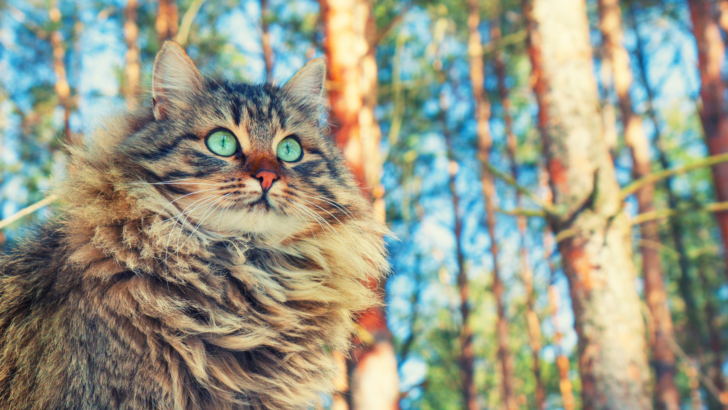Once you decide to bring this fluffy monster into your home, you start to wonder about the Norwegian Forest cat’s health problems.
You don’t want to find yourself in a situation where you don’t know what’s going on with your little friend, nor do you want your cat to suffer from different health issues. Also, if you have kids, they’ll become extremely attached to their furry friend, which means that the loss of this animal could be quite traumatic.
Either way, you’d rather know everything there is before committing to bringing one into your home.
The Norwegian Forest cat is a large animal that can weigh up to 15 pounds. However, males can weigh up to 19 pounds. They have long fur and have a long history that even dates back to the Vikings. They’re Norway’s official feline!
Norwegian Forest cats were even found in Nordic mythology. It’s said that the goddess Freya drove a chariot that was pulled by two of these cats. So, it’s genuinely an honor to have this specimen as a part of your family.
Considering how amazing they are, the Norwegian Forest cats shouldn’t have any health problems. Right?
Norwegian Forest cat’s health problems: 7 issues that could arise
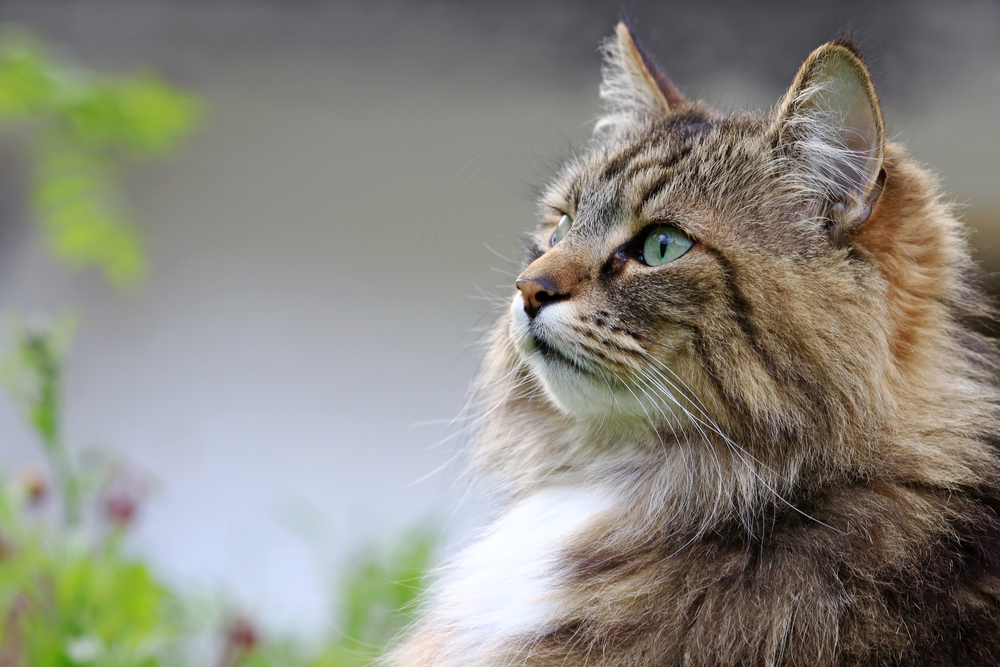
1. Hip dysplasia
Hip dysplasia is one of the health problems that Norwegian Forest cats have to deal with. It’s also known as a loose hip joint. This is an inherited issue that mostly affects larger felines, because of their weight.
Maine Coons, Ragdolls, and Norwegian Forest cats have to be examined quite regularly to make sure that they’re not suffering from this health problem. These big domestic cats simply don’t have strong enough hips to maintain the mobility they need when there’s a lot of pressure and weight on them.
Hip dysplasia is actually a degenerative disease that leads to the malformations of the ball-and-socket joint of the hips. This creates huge problems for your cat because it leads to a lot of pain, inflammation, as well as stiffness in the hips.
If it’s not treated properly, it can even lead to osteoarthritis.
Now that we’ve traumatized you with this information, you probably want to know how you can identify the early signs of hip dysplasia.
Well, your cat will most likely start limping, and she’ll have difficulty jumping. Most of the time she’ll be lethargic and irritable. She won’t have the same amount of motion in her limbs, and after a while, you could even see a significant loss in muscle mass.
2. Hypertrophic cardiomyopathy (HCM)
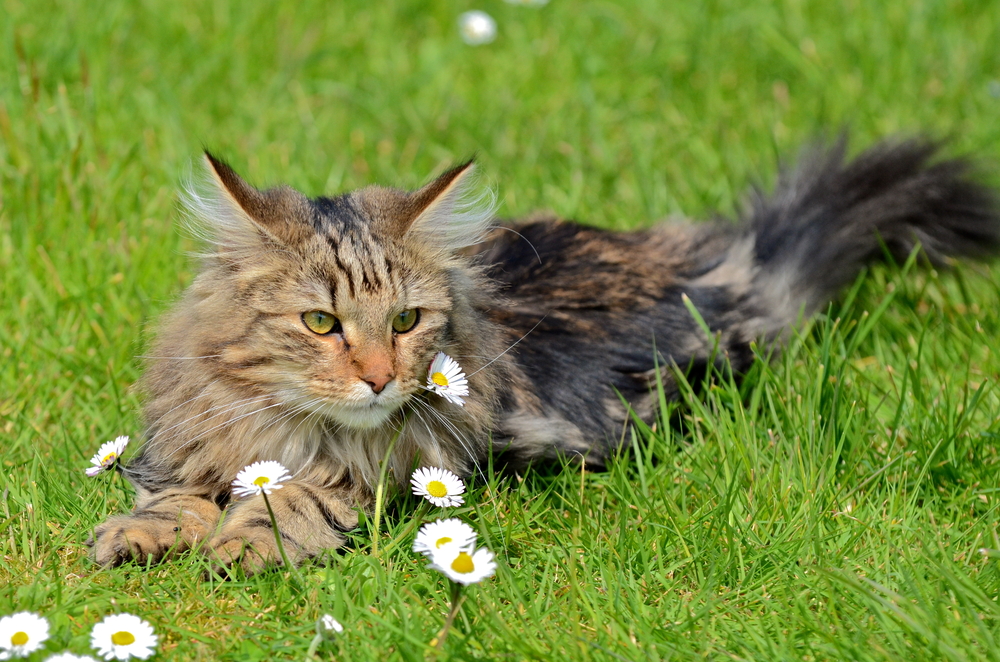
One of the most common health issues of a Norwegian Forest cat is definitely HCM or hypertrophic cardiomyopathy. That’s a mouthful.
This health condition is extremely common among felines, and it entails the thickening of the heart muscle. As you can assume, it makes it difficult for the organ to function properly, so it doesn’t pump enough blood throughout her body.
I don’t want to scare you, but if this isn’t treated as soon as possible, it can be fatal. Firstly, her heart will weaken to the point where blood clots start forming. They’ll cause immobility in the hind legs.
With the progression of the disease, fluids will accumulate in her lungs, which will lead to acute heart failure.
I know it’s terrifying, but you should be aware of this possibility. However, you should stay strong and make sure that you see the first signs that your cat could be developing HCM.
If you see that your cat is becoming lethargic and weak, you should definitely take her to the veterinarian immediately. Because after a while, she won’t be able to eat, and you’ll start hearing labored or rapid breathing.
The worst thing about this disease is the fact that, once you start noticing the signs, it’s probably already too late. This disease progresses quite quickly. So, if the condition is diagnosed early on, it can be manageable with the proper diet and adequate medication.
3. Glycogen storage disease type IV (GSD IV)
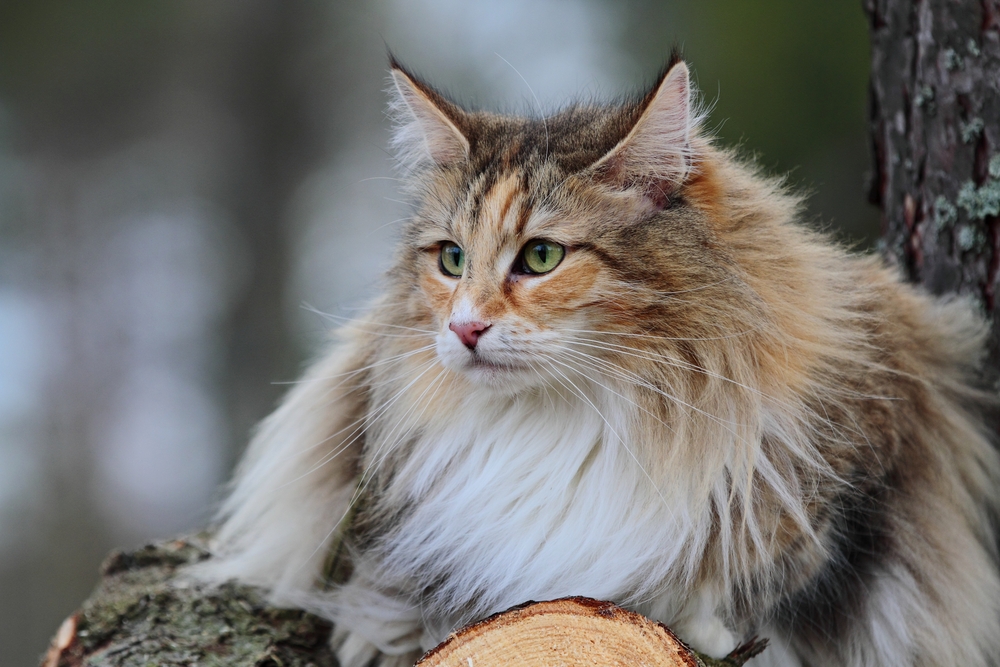
This disease is one of the reasons why you should do extensive research about the breeder that you’re getting your cat from.
One of the most dangerous Norwegian Forest cat’s health problems is glycogen storage disease type IV, or simply GSD IV.
It’s an inherited abnormality that’s caused by a defective enzyme, which prevents a cat from metabolizing glucose normally.
GSD IV can lead to two things. Firstly, kittens that are affected are stillborn most of the time or die within a couple of hours after birth.
If that’s not heartbreaking enough, there’s a chance that a kitten can seem healthy for the first few months and then show signs of neuromuscular degeneration.
The affected Norwegian Forest cat will begin to show muscle weakness, atrophy, and the complete inability to use her limbs. By the eighth month, the condition will be accompanied by organ dysfunction, and she’ll spontaneously die of heart failure.
Once more, as this is an inherited disease, please make sure that you do extensive research on the breeder that you’re getting your kitten from. Simply put, there’s no way to prevent it other than doing a DNA test on the big cats that can determine the carrier of the disease, and then these cats shouldn’t be bred further.
4. Polycystic kidney disease
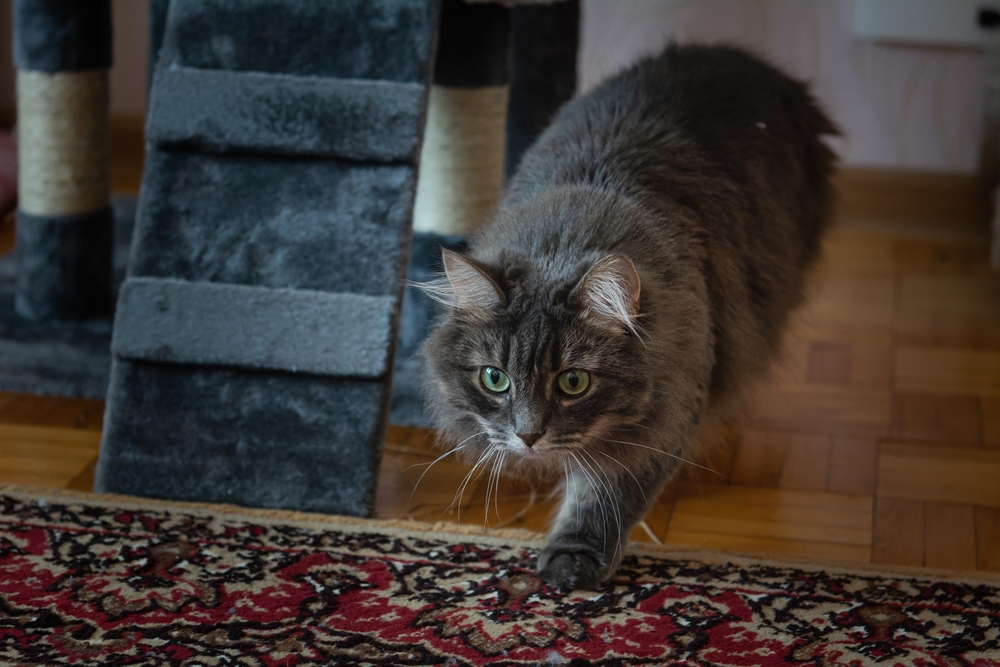
Polycystic kidney disease isn’t a common health problem among Norwegian Forest cats. This mostly affects Persian cats, but it’s also seen between Wegies as well.
This disease is characterized by tiny fluid-filled cysts that form on a kitten’s kidneys at birth. They grow as the kitten grows. These cysts make it extremely hard for the kidneys to function properly.
Most felines won’t show any symptoms until they’re middle-aged or seniors. That’s why it’s important to do routine check-ups with your veterinarian.
The symptom that you should look out for is a lack of appetite, which could lead to weight loss. You’ll probably be able to recognize her excessive thirst, as it comes as an aftermath of all the vomiting and frequent urination.
This condition isn’t curable, and it’s definitely irreversible, however, a change in the diet and the proper treatment of your cat can minimize the impact of the disease. If you take good care of her, you can considerably improve your kitten’s life.
5. Pyruvate kinase deficiency (PKD)
This is also one of the health problems that you can come across with your Wegie. However, most cats can live a completely normal life, even with pyruvate kinase deficiency or PKD.
PKD causes damage to your cat’s blood cells because of an enzyme deficiency. This condition will decrease your cat’s lifespan significantly.
Most of the time, anemia will happen over the course of time, which allows your cat to adapt to those changes, and live quite a normal life. The issue occurs if the disease develops rapidly, and that’s when it can become life-threatening.
You should definitely look out for the early symptoms, which is a lack of appetite that leads to lethargy and the loss of muscle mass. One more thing that you can look for is an increased heart rate.
However, the only way to diagnose PKD is to do a complete biochemistry profile. When it comes to treatment, your feline will need a bone marrow transplant, as it’s the only available treatment for cats with PKD.
6. Retinal dysplasia

If your Norwegian Forest cat has health problems like bloodshot eyes that are swollen, which leads to her crashing into objects, or a complete unwillingness to walk in the dark – then she may have retinal dysplasia.
Retinal dysplasia develops in Norwegian Forest cats while they’re still in the uterus of their mother. It’s an abnormal development of the retina.
It’s usually characterized by tiny blind spots in the eyes of your cat. The problem here is that there’s no treatment for it, as veterinarians believe that it doesn’t cause any serious long-term health issues.
Not to scare you, but if retinal dysplasia affects a bigger portion, then it can lead to a complete retinal detachment.
7. Feline diabetes
Yes, even felines can develop diabetes. Just like in humans, diabetic cats can’t produce or regulate insulin properly. Which, in turn, causes high blood sugar levels.
Most of the time, the male Norwegian Forest cat can develop feline diabetes. They’re especially at risk when they become older, or they gain a lot of weight.
Because the Norwegian Forest cat is a big cat as it is, and she has long fur, noticing that she started gaining weight is no easy task. However, you do have to be aware that obesity is the main reason why they develop feline diabetes.
On the bright side, you can easily prevent this from happening with portion control and regular playtime. Knowing that your Norwegian Forest can develop this health problem, you can take these simple steps to make sure that you’re controlling her diet.
A high-protein diet, with portion control, and a lot of exercise can help in managing it successfully.
There aren’t many health problems that you should really be scared of. They’re usually quite happy and healthy felines, but you should always be careful.
